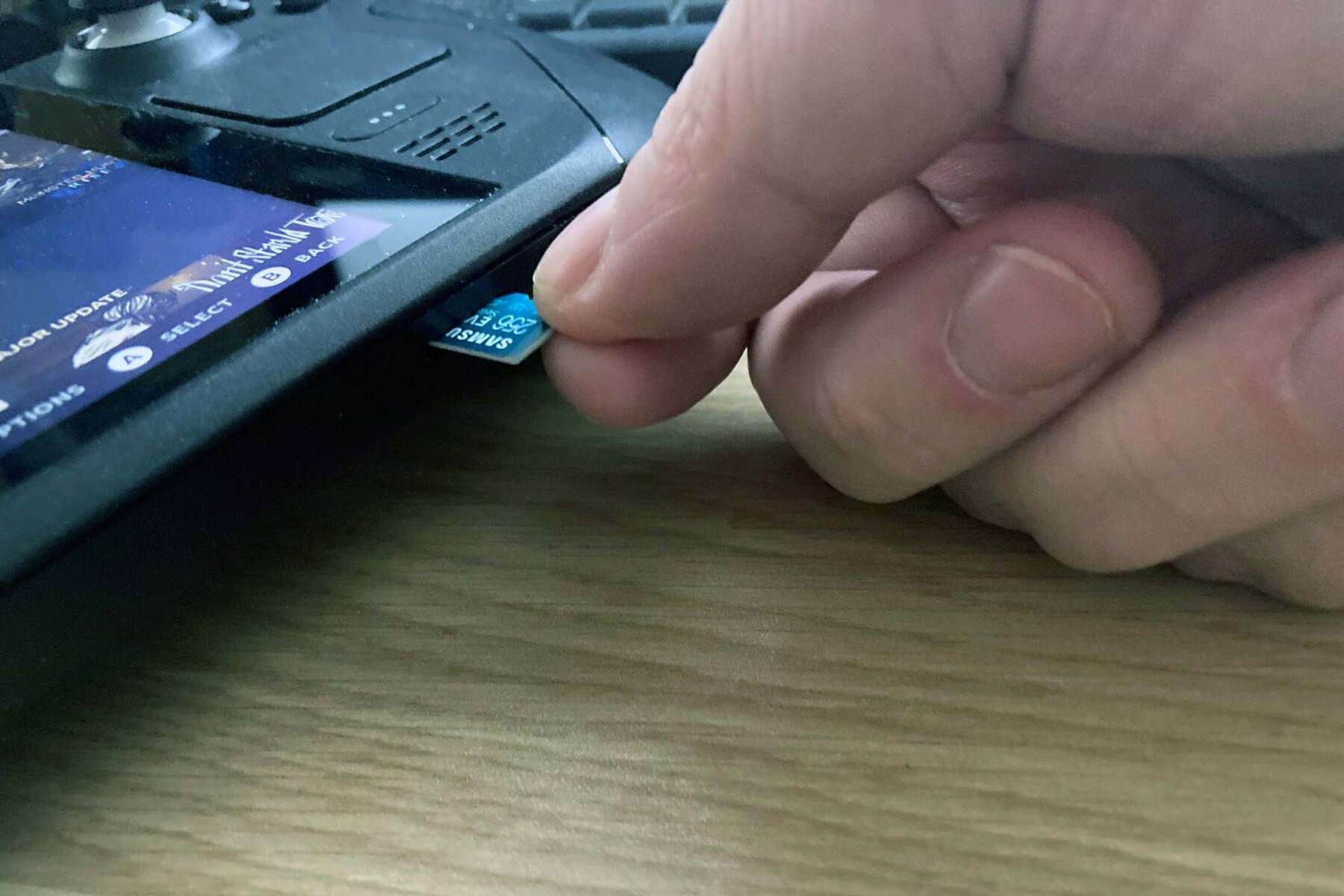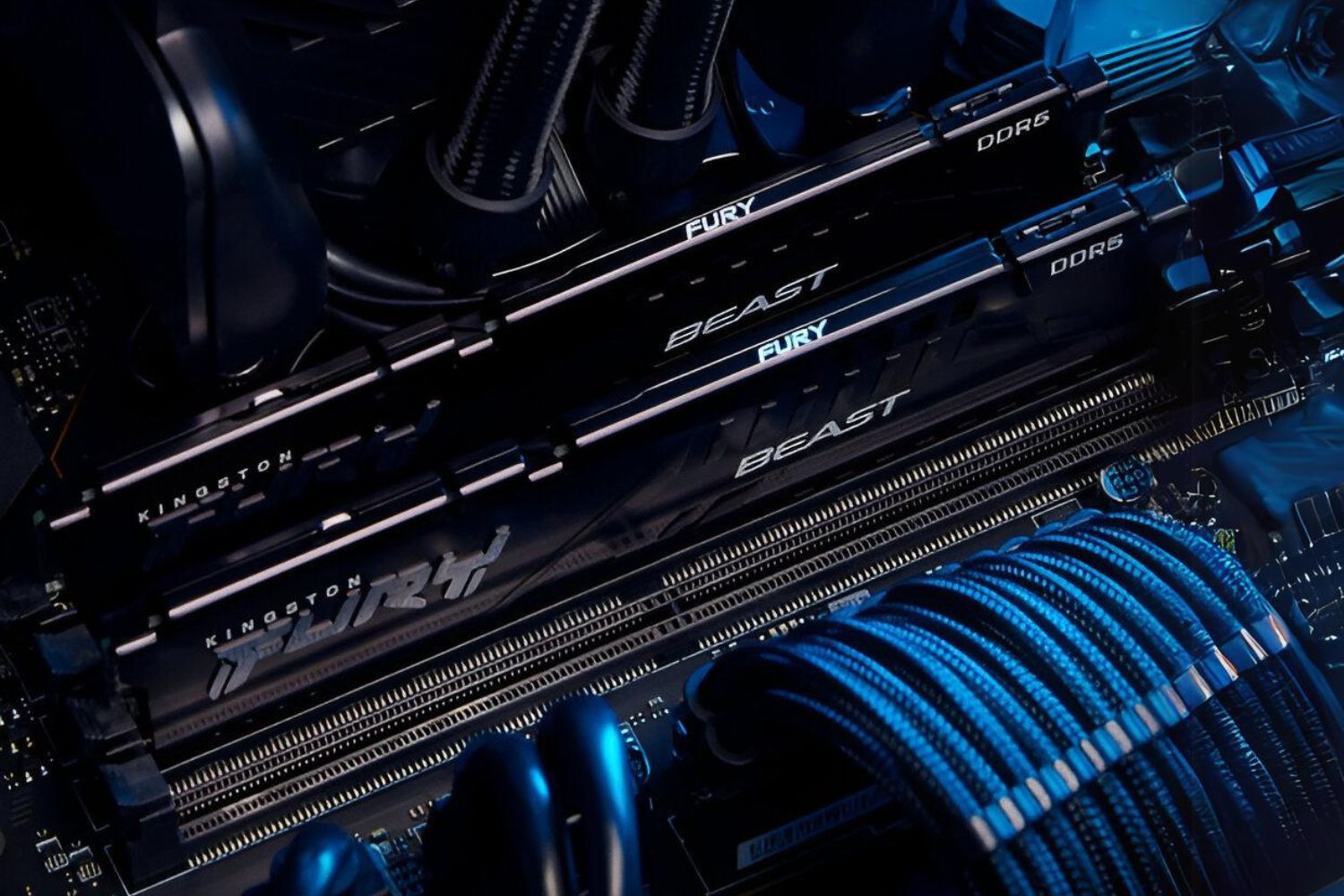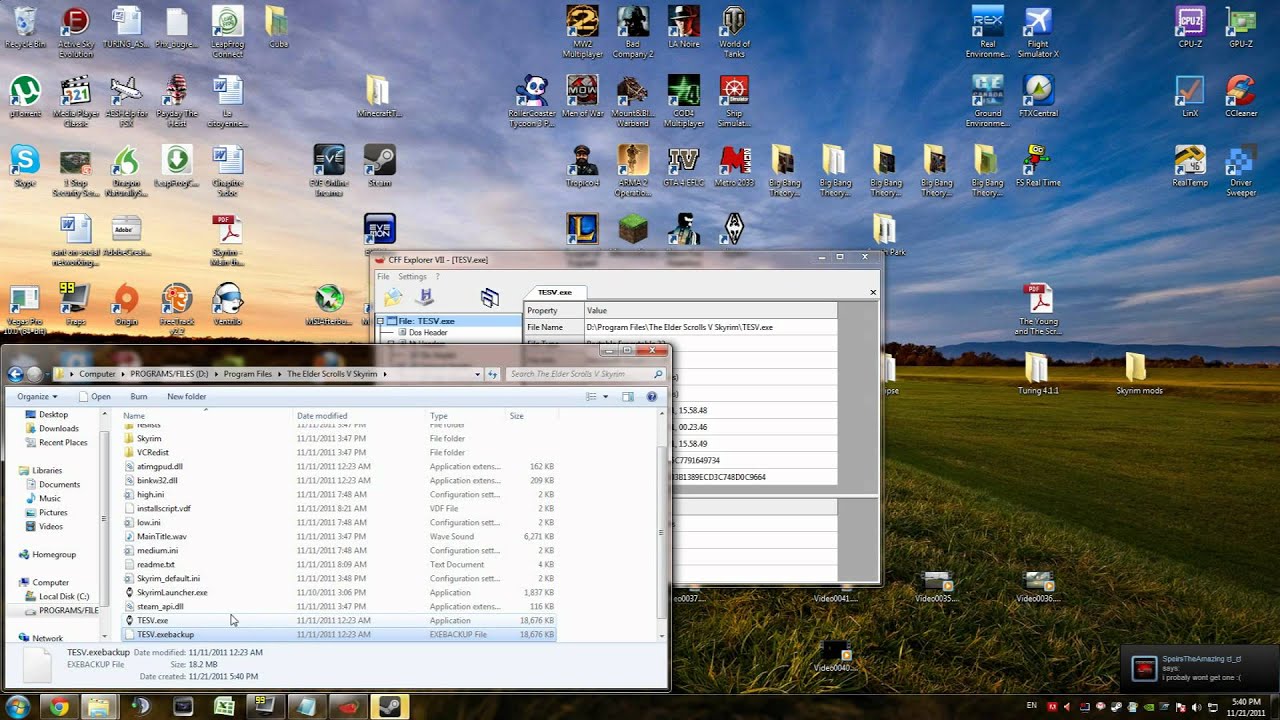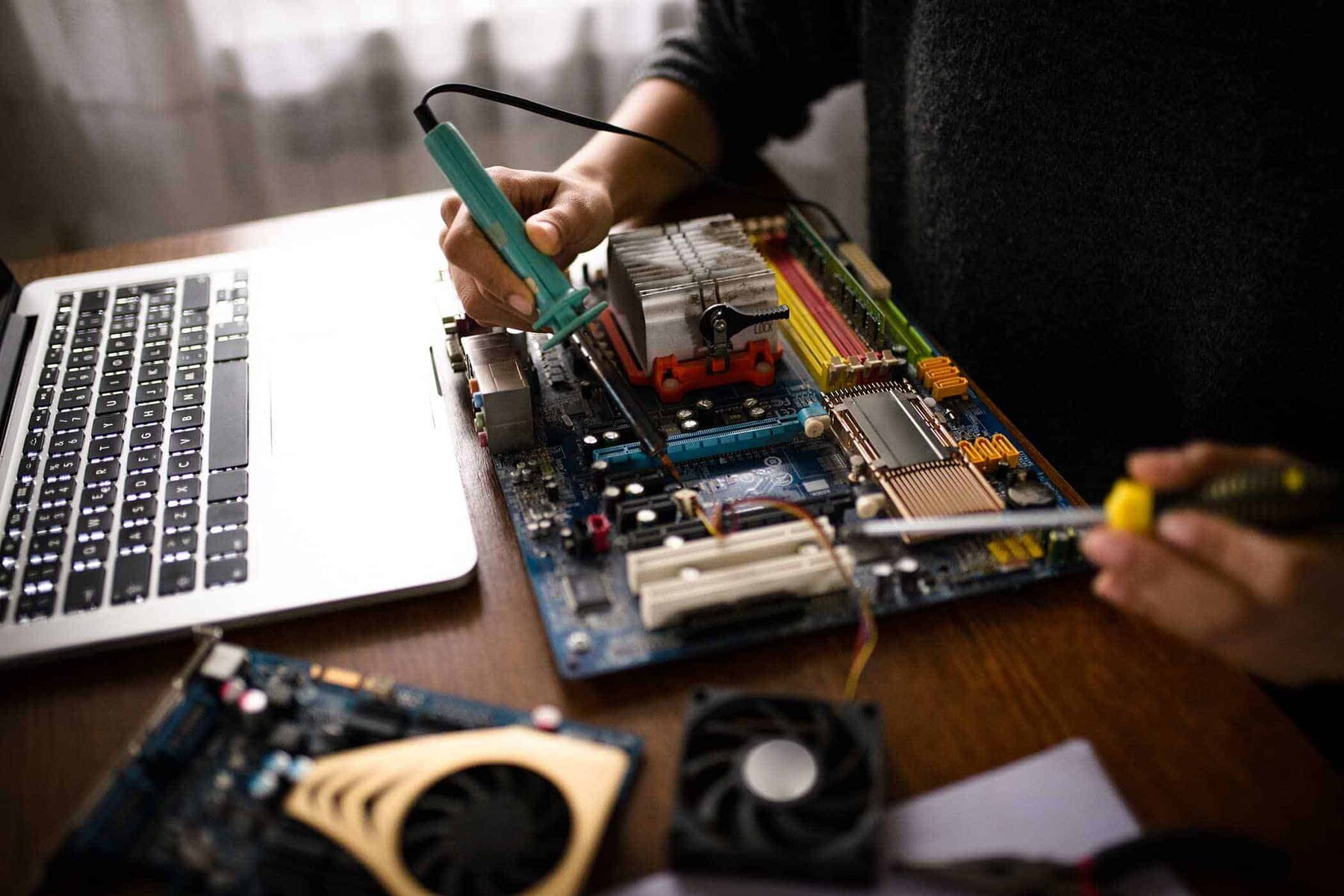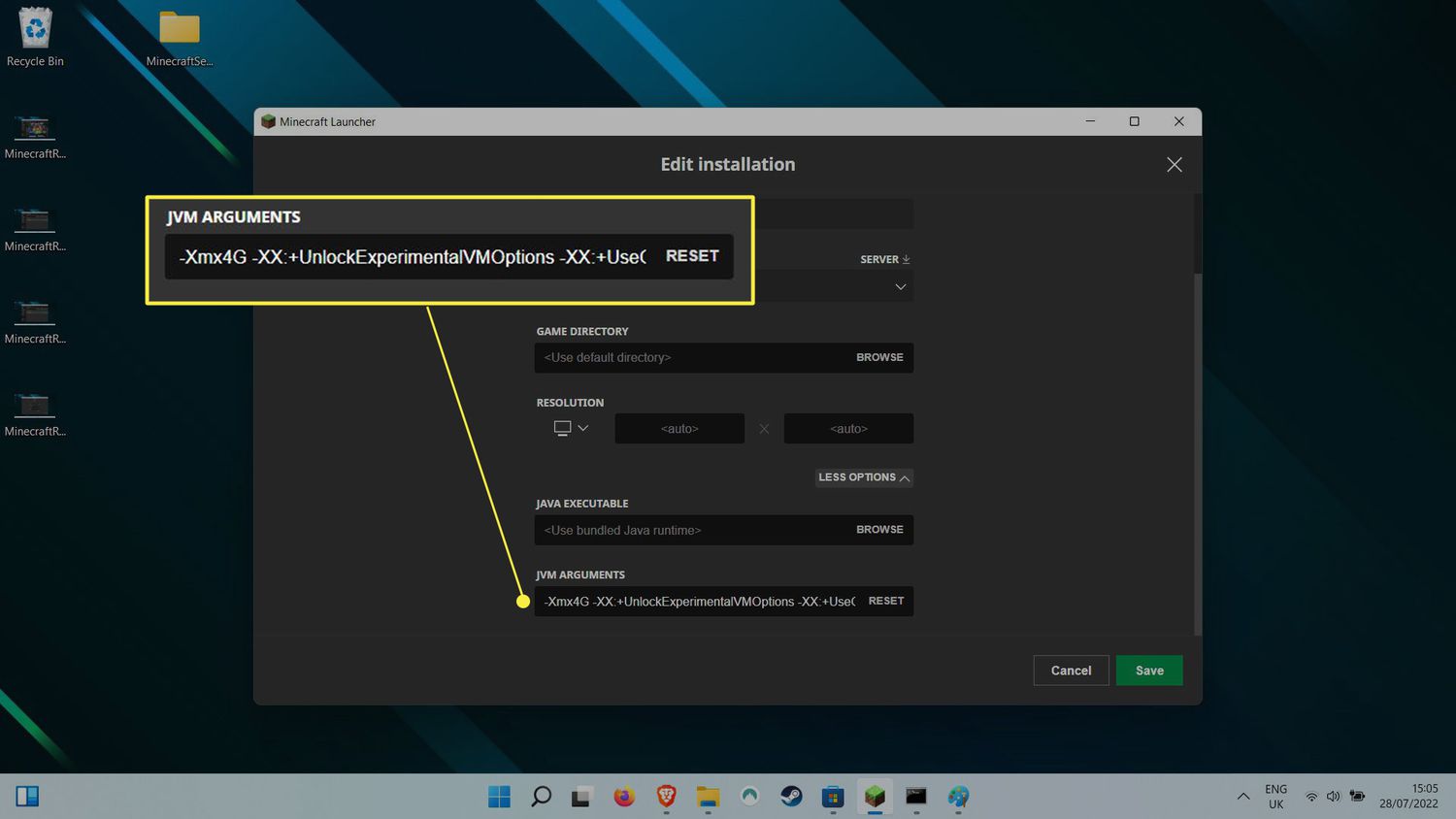Introduction
Welcome to the world of gaming! If you’re an avid gamer, chances are you’ve come across the importance of having enough RAM (Random Access Memory) for an optimal gaming experience. RAM is a crucial component of your computer’s hardware that temporarily stores data for faster access by the processor. When it comes to gaming, having sufficient RAM allows games to run smoothly and seamlessly, without lags or crashes.
One platform that many gamers use to access and play their favorite games is Steam. Steam is a digital distribution platform where users can purchase and download games. While Steam itself is a powerful platform, the performance of the games it offers can be impacted by the amount of RAM allocated to them.
By default, Steam games allocate a certain amount of RAM to run efficiently. However, depending on your system’s specifications, you may find that certain games could benefit from having more RAM allocated to them. Allocating more RAM to your Steam games can enhance overall performance, reduce loading times, and improve the graphics quality.
If you’re not sure how to go about allocating more RAM to your Steam games, fear not! In this guide, we will explore different methods and techniques to help you achieve just that. Whether you’re a seasoned PC gamer or a beginner, this guide will provide you with step-by-step instructions to optimize your gaming experience through increased RAM allocation.
From checking your current RAM allocation to adjusting Steam launch options, editing game configuration files, and even utilizing specialized RAM allocation tools, we’ll cover all the necessary steps to ensure your Steam games are utilizing the maximum amount of available RAM.
So, grab your gaming gear and let’s dive right in!
Understanding RAM (Random Access Memory)
Before we delve into the process of allocating more RAM to your Steam games, it’s essential to have a basic understanding of what RAM is and how it impacts your gaming experience.
RAM, short for Random Access Memory, is a form of computer memory that stores data that is actively being used by the computer’s processor. Unlike storage devices such as hard drives or SSDs, RAM provides quick and temporary access to data, allowing the processor to retrieve information rapidly.
When you launch a game on your computer, it gets loaded into the RAM. The game’s files, textures, and other assets are stored in RAM for quick access by the processor. The amount of RAM available determines how much data can be stored, and insufficient RAM can cause performance issues in games.
RAM plays a critical role in gaming performance. When you play a game, the RAM stores the game’s data, including textures, models, audio files, and more. The more RAM you allocate to a game, the more of these assets can be stored, resulting in smoother gameplay, faster loading times, and better graphics quality.
It’s important to note that allocating more RAM does not necessarily equate to better performance in all cases. The performance improvement depends on several factors, including the system’s overall specifications, the game’s requirements, and how efficiently the game utilizes the available resources.
Moreover, increasing RAM allocation is beneficial primarily when you have excess RAM available. If your system already operates close to its maximum capacity, allocating more RAM may not yield significant improvements.
Understanding the role of RAM in gaming and how it affects game performance is crucial before proceeding to allocate more RAM to your Steam games. With this knowledge in hand, you’ll be better equipped to make informed decisions and optimize your gaming experience.
Why Allocate More RAM to Steam Games?
Allocating more RAM to your Steam games can have several advantages that directly impact your gaming experience. Let’s explore some of the key reasons why you should consider increasing RAM allocation:
- Improved Performance: By allocating more RAM to your Steam games, you provide the game with additional resources to work with. This can result in improved performance, smoother gameplay, and reduced lags or stutters.
- Faster Loading Times: Games with larger levels or open-world environments can take a while to load. Increasing the RAM allocation allows your computer to store more game data, reducing loading times and allowing you to jump into your favorite games quicker.
- Better Graphics Quality: Games with high-resolution textures and detailed graphics require a significant amount of RAM to render them efficiently. By allocating more RAM, you ensure that your computer has enough resources to handle the graphical demands of the game, resulting in sharper textures and improved visual quality.
- Reduced Game Crashes: Inadequate RAM allocation can lead to game crashes, especially in resource-intensive games. By providing more RAM to the game, you’re giving it the necessary space to run smoothly, minimizing the likelihood of crashes and improving overall stability.
- Flexibility for Modding: Modding is a popular way to enhance and customize games. Many mods require additional resources, such as RAM, to function properly. By allocating more RAM, you ensure that your system has enough headroom to accommodate mods without causing performance issues.
It’s worth noting that the benefits of allocating more RAM to Steam games may vary depending on factors such as the game’s requirements, your system specifications, and the current RAM usage. While increasing RAM allocation can provide significant improvements in some cases, it’s not a guarantee for optimal performance in all situations.
Before proceeding with the RAM allocation process, it’s essential to assess your system’s capabilities, available RAM, and the specific requirements of your desired games. This information will help you determine the optimal amount of RAM to allocate, maximizing the benefits without overburdening your system.
Now that we understand the reasons behind allocating more RAM to Steam games, let’s explore how to check your current RAM allocation before making any adjustments.
Checking Your Current RAM Allocation
Before you proceed to allocate more RAM to your Steam games, it’s essential to check your current RAM allocation. This will give you an understanding of how your system is currently utilizing its resources and help you make informed decisions when adjusting RAM allocation.
There are a few ways you can check your current RAM allocation:
- Task Manager: On Windows, you can use the built-in Task Manager to check your RAM usage. To open Task Manager, right-click on the taskbar and select “Task Manager” from the menu. In the Task Manager window, go to the “Performance” tab, and you’ll see a section labeled “Memory” or “RAM” that displays your current RAM usage.
- Activity Monitor: On macOS, the Activity Monitor provides information about your system’s resource usage, including RAM. To open Activity Monitor, go to the “Applications” folder, then open the “Utilities” folder and locate and launch “Activity Monitor.” In the Activity Monitor window, select the “Memory” tab to view your current RAM allocation.
- Third-Party Monitoring Software: There are several third-party software tools available that provide comprehensive system monitoring, including RAM allocation. These tools often offer more detailed analytics and real-time monitoring of your system’s resources. Some popular options include CPU-Z, HWMonitor, and Open Hardware Monitor.
By checking your current RAM allocation, you can determine how much RAM is being used and how much is available for allocation. This information will help you gauge whether allocating more RAM would be beneficial for your system and Steam games.
Once you have a clear understanding of your current RAM allocation, you’re ready to move on to the next steps in the process of allocating more RAM to your Steam games. In the following sections, we’ll explore different methods and techniques to adjust RAM allocation and enhance your gaming experience.
Adjusting Steam Launch Options
One of the ways to allocate more RAM to your Steam games is by adjusting the launch options within the Steam client. Launch options allow you to modify various settings for specific games, including the amount of RAM allocated.
Here’s the step-by-step process to adjust Steam launch options:
- Launch the Steam application on your computer and go to your game library.
- Right-click on the game for which you want to allocate more RAM and select “Properties” from the drop-down menu.
- In the Properties window that appears, click on the “Set Launch Options” button.
- A new dialog box will open, allowing you to enter launch options for the game. In this box, type in the following command:
-heapsize [amount of RAM in kilobytes]
Replace “[amount of RAM in kilobytes]” with the desired value for RAM allocation. For example, if you want to allocate 4GB (4194304 kilobytes) of RAM, you would enter:
-heapsize 4194304 - Click “OK” to save the launch options.
- Finally, launch the game, and it will now allocate the specified amount of RAM.
Please note that not all games support launch options, and the effectiveness of this method can vary depending on the game and your system specifications. Additionally, allocating too much RAM may result in instability or performance issues. It’s recommended to start with conservative values and gradually increase if needed, monitoring the game’s performance as you go.
Adjusting Steam launch options can be a straightforward and effective way to allocate more RAM to your games. However, if you’re looking for more advanced customization or if the game doesn’t support launch options, you may need to explore alternative methods, such as editing the game’s configuration files.
In the next section, we’ll explore how you can edit the configuration files of your Steam games to allocate more RAM and optimize your gaming experience further.
Editing the Game’s Configuration Files
If adjusting the launch options in Steam doesn’t provide the desired level of RAM allocation, another option is to manually edit the game’s configuration files. This method allows for more in-depth customization and fine-tuning of the RAM allocation for specific games.
Here’s how you can edit the game’s configuration files:
- Locate the game’s configuration files. These files are typically stored in the game’s installation folder, sometimes in a subfolder named “config” or “settings.” You may need to explore the game’s installation directory or consult the game’s documentation to find the specific configuration files.
- Make a backup copy of the configuration files before making any changes. This ensures that you can revert to the original settings if anything goes wrong.
- Open the configuration file using a text editor, such as Notepad or Sublime Text.
- Look for a line or parameter that controls the RAM allocation for the game. This may vary depending on the game, but common keywords to look for include “memory,” “RAM,” or “heap size.”
- Edit the value associated with the RAM allocation parameter to the desired amount of RAM. This value is usually specified in megabytes or kilobytes. Be cautious not to exceed the available RAM on your system, as this can lead to instability.
- Save the changes to the configuration file and close the text editor.
- Launch the game and observe if the RAM allocation changes have taken effect.
It’s important to note that editing game configuration files requires some technical knowledge and can vary depending on the game and its specific configuration structure. It’s recommended to consult the game’s documentation or seek assistance from online forums or the game’s community for guidance specific to the game you’re playing.
Editing the game’s configuration files provides a more customizable approach to allocate more RAM and optimize your gaming experience. However, if you prefer a more straightforward and automated method, there are dedicated RAM allocation tools available that can simplify the process.
In the next section, we’ll explore the use of RAM allocation tools and how they can streamline the process of allocating more RAM to your Steam games.
Using a RAM Allocation Tool
If you prefer a more user-friendly and automated approach to allocate more RAM to your Steam games, you can utilize dedicated RAM allocation tools. These tools are designed to optimize your system’s RAM usage and allocate resources effectively for improved gaming performance.
Here’s how you can use a RAM allocation tool:
- Research and choose a reputable RAM allocation tool that is compatible with your operating system. Some popular options include “Wise Memory Optimizer” for Windows and “Memory Clean” for macOS.
- Download and install the RAM allocation tool on your computer.
- Launch the tool and navigate to the options or settings menu.
- Look for a specific option related to game optimization or RAM allocation. This option may vary depending on the tool.
- Adjust the settings to allocate more RAM to your games. Some tools may have a preset option to allocate more RAM automatically, while others allow you to customize the allocation manually.
- Save the settings and close the RAM allocation tool.
- Launch your Steam games and observe the improvements in performance and RAM allocation.
RAM allocation tools offer a convenient way to enhance your gaming experience by automatically managing your system’s resources. They can optimize RAM usage, clear unnecessary data from memory, and allocate more resources to the games you’re playing.
It’s important to note that the effectiveness of RAM allocation tools may vary depending on several factors, such as your system’s specifications, the specific games you’re playing, and how efficiently the tools manage memory allocation. It’s recommended to research and choose a reliable and well-reviewed tool that suits your needs.
Using a RAM allocation tool can simplify the process of allocating more RAM to your Steam games and provide an automated solution for optimizing your gaming experience. However, if you’re still not satisfied with the results or prefer a more manual approach, you can try restarting your computer.
In the next section, we’ll explore the impact of restarting your computer on RAM allocation and gaming performance.
Restarting Your Computer
When it comes to optimizing your system’s RAM allocation for Steam games, sometimes a simple restart of your computer can do wonders. Restarting your computer helps clear temporary files and processes, freeing up space in the RAM and ensuring a fresh start for your gaming session.
Here’s how restarting your computer can help improve RAM allocation and gaming performance:
- Clearing System Cache: Over time, your computer accumulates temporary files and caches from various programs and processes. These files can take up valuable space in the RAM, potentially impacting the performance of your Steam games. By restarting your computer, these caches are cleared, allowing for a clean slate and improved RAM allocation.
- Resetting Resource Allocation: When you restart your computer, all processes and programs are terminated and then restarted from scratch. This helps reset the resource allocation within your system, ensuring that RAM is distributed efficiently and prioritized for your gaming needs.
- Releasing Memory Leaks: In some cases, certain programs or processes may have memory leaks, which result in the gradual consumption of RAM resources. Restarting your computer can help identify and address these memory leaks, freeing up RAM and preventing further degradation of performance.
- Fixing System Issues: Restarting your computer can also address any underlying system issues or conflicts that may be affecting RAM allocation and game performance. By starting with a fresh boot, you give your computer a chance to resolve any potential software conflicts or errors that could hinder optimal RAM utilization.
Before restarting your computer, ensure that you save any unsaved work and close all running programs, including the Steam client. This ensures a clean restart and minimizes the chances of data loss or interruptions.
After the restart, launch the Steam client, and start your desired game. You should notice an improvement in RAM allocation and overall gaming performance.
Restarting your computer is a simple yet effective way to optimize RAM allocation and enhance gaming performance. It can be especially helpful when combined with other RAM allocation techniques, such as adjusting launch options, editing configuration files, or utilizing RAM allocation tools.
In the next section, we’ll conclude our guide and summarize the key points discussed throughout the article.
Conclusion
Optimizing RAM allocation for your Steam games is a crucial step in enhancing your gaming experience. By allocating more RAM, you can improve performance, reduce loading times, and achieve better graphics quality.
In this guide, we explored various methods to allocate more RAM to your Steam games:
- We started by understanding the role of RAM in gaming and its impact on overall performance.
- We discussed the reasons why allocating more RAM to Steam games can be beneficial.
- We covered how to check your current RAM allocation using tools such as Task Manager or Activity Monitor.
- We explained how to adjust Steam launch options to allocate more RAM to specific games.
- We explored the option of editing the game’s configuration files for more customized RAM allocation.
- We introduced RAM allocation tools that simplify the process and optimize system resources.
- We emphasized the benefits of restarting your computer to clear caches, reset resource allocation, and address potential system issues.
It’s important to remember that allocating more RAM is not a one-size-fits-all solution. The effectiveness of these methods may vary depending on your system specifications, game requirements, and available resources. It’s crucial to assess your system’s capabilities and monitor the game’s performance to determine the optimal RAM allocation for each game.
By implementing the techniques discussed in this guide, you can fine-tune your RAM allocation to optimize your gaming experience. Whether you choose to adjust launch options, edit configuration files, use RAM allocation tools, or simply restart your computer, these steps can make a noticeable difference in gameplay, loading times, and graphics quality.
Now that you’re equipped with the knowledge and tools to allocate more RAM to your Steam games, go ahead and take your gaming experience to the next level!









